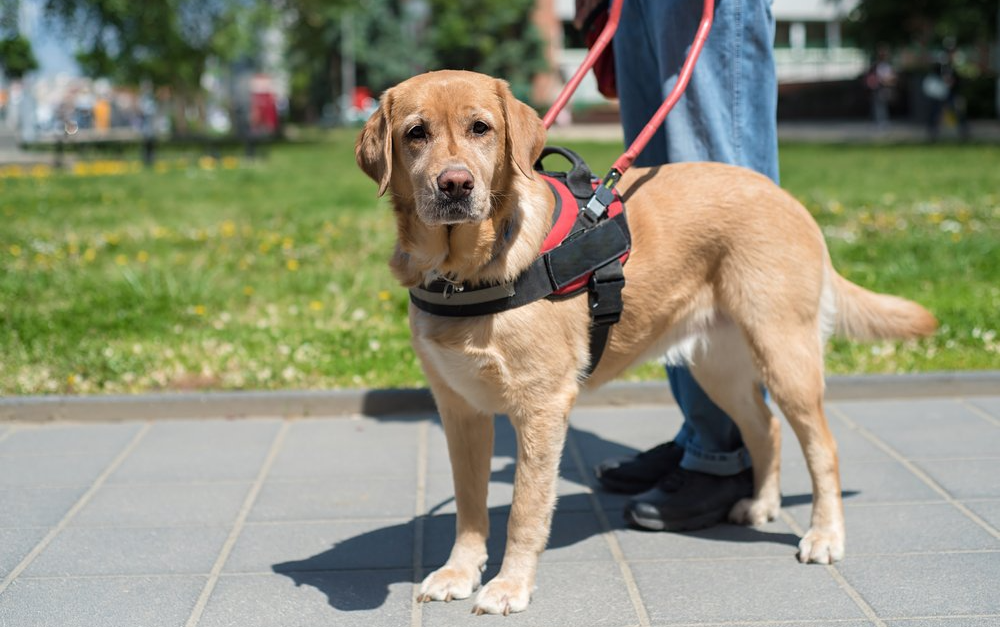A most interesting patient

Blog vol 3. 30 A most interesting patient.
Yesterday, I saw my most unusual patient. Once a year she comes in with her owner for an eye check. The patient is a dog, a beautiful Golden Lab.
My human patient was hit by a car when younger and lost the vision in one eye and over 90 percent of his visual field in his other. Some visual field impairments can make it very difficult to get around and this is where the visual guide dog is crucial. This pair has been together for 11 years and is always a welcome sight when they come for their annual visit.
The canine eye is similar and yet much different from the human eye. The dog eye has a cornea and lens like the human eye but the dog versions are much larger, and dogs have a third eyelid that comes up between the lower lid and the eye. Their irises, the coloured part of the eye, are usually brown, making some breeds like Samoyed or Husky stand out when you see their piercing blues.
A dog’s retina is quite different from a human’s, having mostly rods and few cones, and these cones only detect two colours instead of three. Humans see the entire spectrum and see best during the day, whereas dogs see more in greys, yellow and blues and see well at night or in the reduced light of dawn or dusk.
Not only do they have more sensitive night receptors, they also have a tapetum. The tapetum is a layer of reflective material that lies just under the retina and serves to reflect the light back to the receptors. That is the coolest part of examining a dog’s eyes; you get this very bright shine coming back when you look inside.
A dog’s visual acuity is usually not as good as a human’s, but their peripheral vision is superb.
Most guide dogs are used for mobility, allowing their owner the freedom to get around with very little anxiety. This requires extensive training for the dog. There is a guide dog training facility in Oakville run by the Lions Foundation. They raise the puppies, train them, and accredit them to serve their many clients. Only some breeds of dogs are eligible, with the Golden Lab very popular; other breeds in use are Golden Retrievers, Labradors, Standard Poodles, Border Collies, Australian Shepherds, Boxers, Airedales, Collies, and Dobermans.
When you see a person with their dog, make a little room for them, and try not to pet or distract the dog. When their harness is on they are working, and that is what they are trained for. If you are interested in helping out, there are many ways you can. (Click here for more information).
By the way, my Golden Lab patient passed her eye exam with flying colours.
Woof! Woof!
the good doctor






